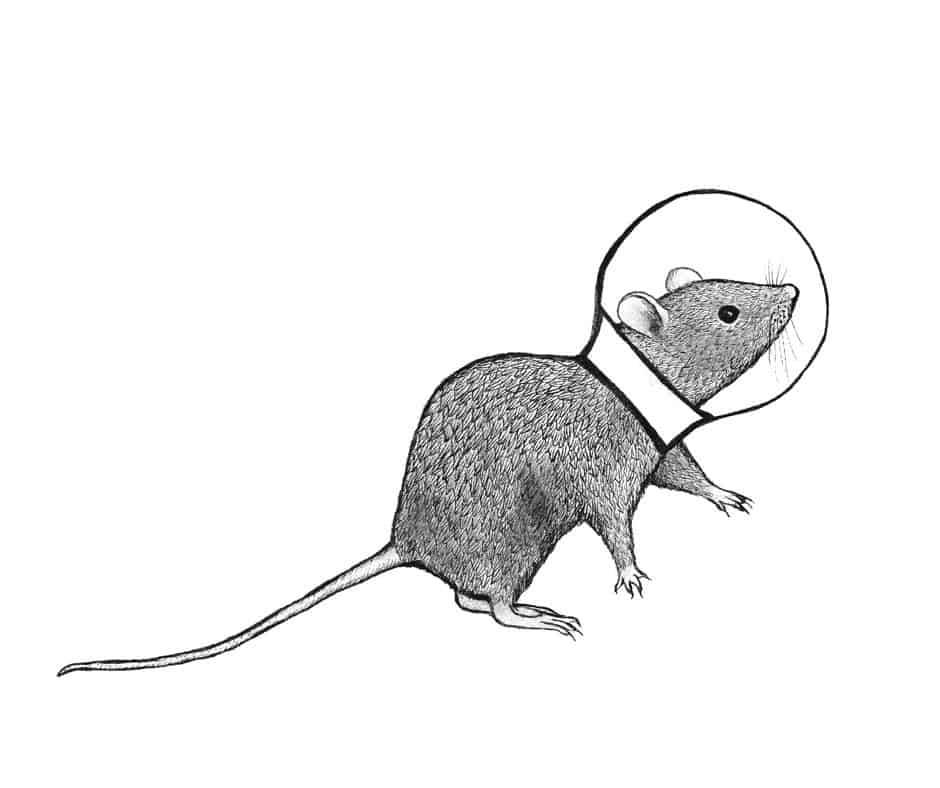For the first time in NASA’s history, rodents sent to the International Space Station have been successfully returned to Earth alive, shedding light on the impact of microgravity on bone density.
In a historic first for NASA, a rodent sent to the International Space Station has been successfully returned to Earth alive, shedding light on the impact of microgravity on bone density.
As researchers continue to investigate the effects of space travel on human health, a recent study published in the journal Cell Reports suggests that changes to the gut microbiomes of space travelers could be linked to bone loss.
In fact, rodents that spent at least a month on the ISS were found to have altered and more diverse microbiomes, and the bacterial species that thrived in microgravity may have contributed to the increased production of molecules known to affect bone remodeling.
These findings could have important implications for future space travel, as scientists work to develop strategies to mitigate the negative effects of extended periods of time spent in space.
“This is just another vivid example showing the dynamic interactions between the microbiome and mammalian hosts,” says senior author Wenyuan Shi, adding, “the gut microbiome is constantly monitoring and reacting, and that’s also the case when you’re exposed to microgravity.
“We’ve yet to find out whether there’s a causal link between changes to the microbiome and the observed bone loss in microgravity and if it is simply a consequence or an active compensation to mitigate, but the data are encouraging and create new avenues for exploration.”
The human skeleton is a dynamic system that undergoes constant changes even after reaching full growth. The process of bone remodeling involves the continuous addition, removal, and redistribution of material within our bones. Emerging research suggests that the trillions of gut microbes residing in our bodies could have an impact on this process by interacting with our immune and hormonal systems via various mechanisms.
Furthermore, these microbes produce diverse molecules as part of their metabolic activities, some of which may indirectly interact with the cells involved in bone remodeling.
Several factors could impact the microbiome during space travel, according to microbiologist Joseph K. Bedree, who conducted research at UCLA and the Forsyth Institute. Physical forces like microgravity and cosmic radiation can affect both bacterial and human cells, causing imbalances in biological systems like the immune system, musculoskeletal structure, circadian rhythm, and stress. These imbalances could potentially disrupt microbial communities as well.
The researchers aimed to examine the alterations in the microbiome during extended exposure to microgravity and to explore potential connections between these shifts and bone density. To do so, they sent 20 rodents to the International Space Station. Half of these rodents were brought back to Earth after 4.5 weeks, and the scientists monitored their microbiome recovery. The remaining 10 rodents stayed in orbit for a total of 9 weeks. In parallel, 20 “control” rodents were kept on Earth under the same conditions, except for the absence of microgravity. The investigators analyzed and compared the microbial populations of the various groups at different time points: before the launch, upon return to Earth, and at the conclusion of the study. Additionally, they assessed serum metabolite changes in the rodents that were exposed to microgravity for the entire 9 weeks.

After examining and comparing the intestinal microbiomes of both space and ground control rodents, the team discovered that the space rodents exhibited a greater diversity in their gut microbiomes. The presence of Lactobacillus and Dorea species—two types of bacteria—was significantly more pronounced in rodents subjected to microgravity. Furthermore, their abundance increased even more in rodents that spent 9 weeks in space, as opposed to those in space for just 4.5 weeks. The metabolic processes of these two bacterial species might also play a role in the heightened levels of metabolites detected in relation to microgravity exposure.
“When we mapped the genetic pathways for Lactobacillus and Dorea, they seemed to line up with the metabolites that were elevated during microgravity exposure,” adds Bedree. “When someone’s in microgravity and experiencing bone loss, it would make sense that their body would try to compensate and that the biological systems within would be doing that as well, but we need to do more mechanistic studies to truly validate these hypotheses.”
A non-microgravity element that could have impacted the alteration of the rodents’ gut microbiota in space is the inability to perform coprophagy, a typical behavior for rodents where they consume their feces to reintroduce microorganisms to their digestive system. Nonetheless, the rodents that came back from space after a duration of 4.5 weeks resumed coprophagy, which likely played a role in the restoration of their microbiomes.
This research offers valuable insights into the transformation of the microbiome during space missions, but the authors emphasize the need for further investigation to comprehend the potential connection between gut microbiota and bone density. They intend to carry on with their research here on Earth.

By identifying the specific microorganisms that contribute to sustaining bone density, we could potentially enhance the well-being of astronauts during space missions. Additionally, this knowledge may provide valuable insights for individuals experiencing bone deterioration on Earth due to causes unrelated to gravitational forces.
“This could potentially lead to new tools for managing diseases like osteopenia or osteoporosis, so it’s not just an isolated story in space,” adds Shi.
Image Credit: Getty and Liana Wait
